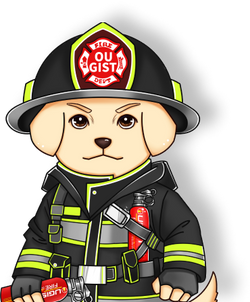Standard for Portable Fire Extinguishers from NFPA
Fire safety is a critical aspect of ensuring the well-being of individuals and protecting valuable assets. Portable fire extinguishers play a crucial role in preventing the spread of fires and minimizing their impact. In this blog post, we will delve into the key points of the National Fire Protection Association's (NFPA) standard for portable fire extinguishers, NFPA 10. This comprehensive guide will cover the classification, installation, maintenance, and proper use of fire extinguishers.

-
Classification and Types of Fire Extinguishers: NFPA 10 outlines the various classes of fires and specifies the appropriate types of fire extinguishers for each class. These classes include Class A (ordinary combustibles), Class B (flammable liquids and gases), Class C (electrical fires), Class D (combustible metals), and Class K (cooking media). Understanding the right extinguisher for each fire class is essential for effective fire management.
-
Installation and Placement: Proper installation and placement of fire extinguishers are critical for their accessibility and functionality. NFPA 10 provides guidelines for positioning extinguishers in different environments, such as commercial buildings, homes, industrial facilities, and vehicles. Factors like mounting heights, clearances, and easy access are taken into account to ensure quick and efficient use during emergencies.
-
Inspection and Maintenance: Regular inspection and maintenance of fire extinguishers are paramount to their reliability. NFPA 10 sets forth a recommended schedule and procedures for inspecting extinguishers. These inspections involve checking pressure levels, assessing physical conditions, and verifying safety features. Ensuring that extinguishers are in proper working condition is vital for their readiness in times of need.
-
Hydrostatic Testing: To maintain the structural integrity of fire extinguisher cylinders, hydrostatic testing is required. NFPA 10 provides guidelines for conducting these pressure tests, ensuring that the cylinders can withstand the pressures they might encounter during firefighting activities.
-
Training and Education: Even the best fire extinguishers are only as effective as the individuals using them. NFPA 10 emphasizes the importance of proper training for individuals responsible for operating fire extinguishers. Adequate training equips users with the knowledge and skills to use extinguishers correctly and safely.

-
Labels and Markings: Clear labels and markings on fire extinguishers provide essential information about their contents, appropriate usage, and maintenance records. NFPA 10 defines the necessary labeling requirements to ensure users have access to vital information during emergencies.
-
Recharging and Reconditioning: After use or during routine maintenance, fire extinguishers might require recharging or reconditioning. NFPA 10 offers guidance on these procedures, which are essential to restore extinguishers to full operational capacity.
-
Documentation: Keeping meticulous records of fire extinguisher inspections, maintenance activities, tests, and repairs is recommended by NFPA 10. Proper documentation aids in demonstrating compliance with safety standards and maintaining a comprehensive history of each extinguisher's condition.


